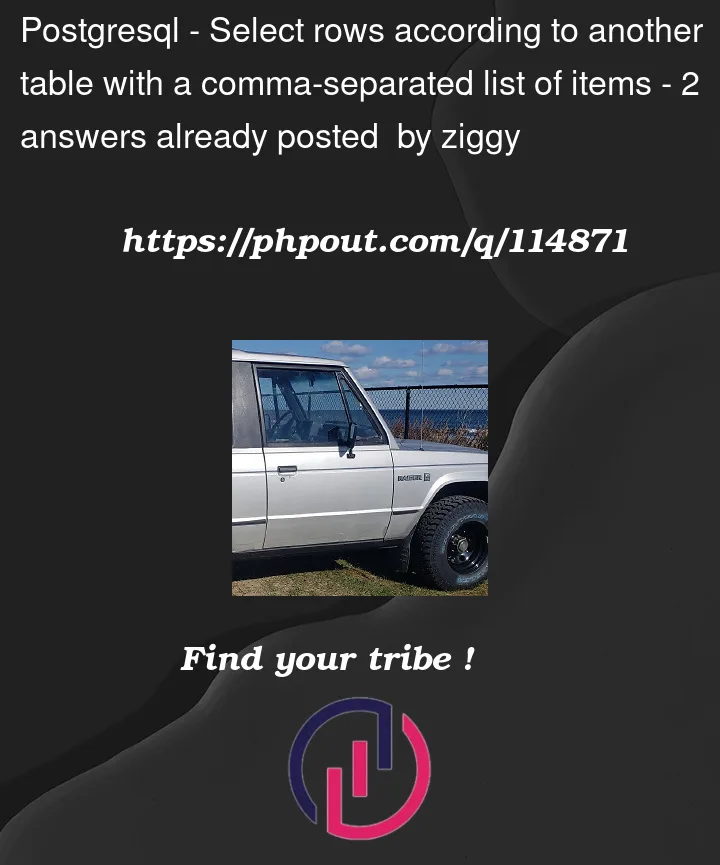Have a table test.
select b from test
b is a text column and contains Apartment,Residential
The other table is a parcel table with a classification column. I’d like to use test.b to select the right classifications in the parcels table.
select * from classi where classification in(select b from test)
this returns no rows
select * from classi where classification =any(select '{'||b||'}' from test)
same story with this one
I may make a function to loop through the b column but I’m trying to find an easier solution
Test case:
create table classi as
select 'Residential'::text as classification
union
select 'Apartment'::text as classification
union
select 'Commercial'::text as classification;
create table test as
select 'Apartment,Residential'::text as b;




2
Answers
You need to first split b into an array and then get the rows. A couple of alternatives:
Essential to both is the unnest surrounding string_to_array.
You don’t actually need to unnest the array:
db<>fiddle here
The problem is that
= ANYtakes a set or an array, andINtakes a set or a list, and your ambiguous attempts resulted in Postgres picking the wrong variant. My formulation makes Postgres expect an array as it should.For a detailed explanation see:
Note that my query also works for multiple rows in table
test. Your demo only shows a single row, which is a corner case for a table …But also note that multiple rows in
testmay produce (additional) duplicates. You’d have to fold duplicates or switch to a different query style to get de-duplicate. Like:This prevents duplication from elements within a single
test.b, as well as from across multipletest.b.EXISTSreturns a single row fromclassiper definition.The most efficient query style depends on the complete picture.